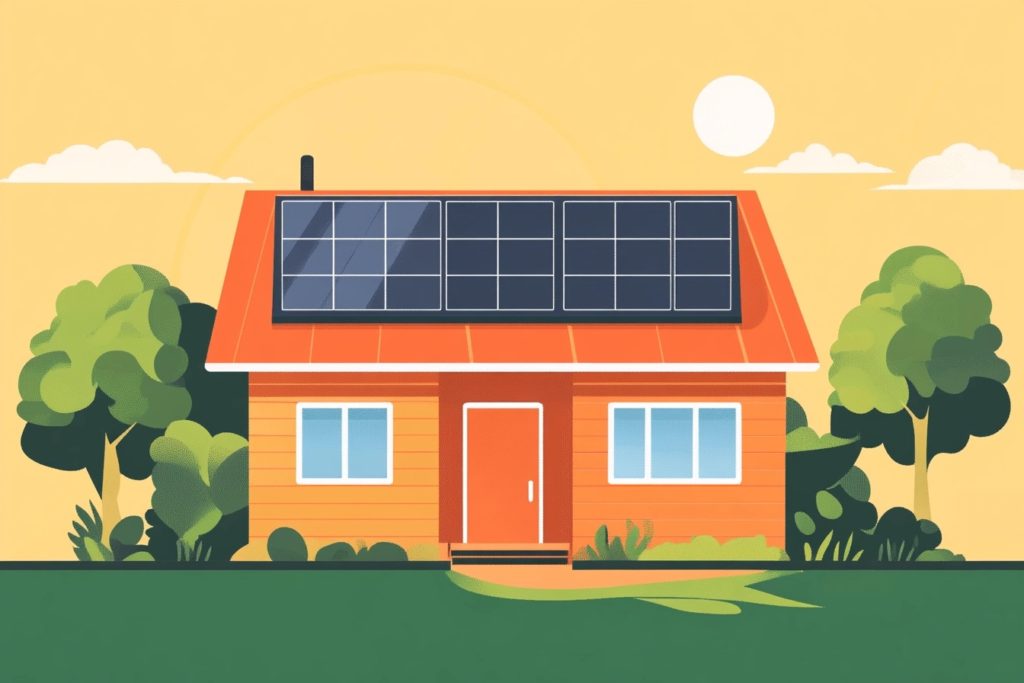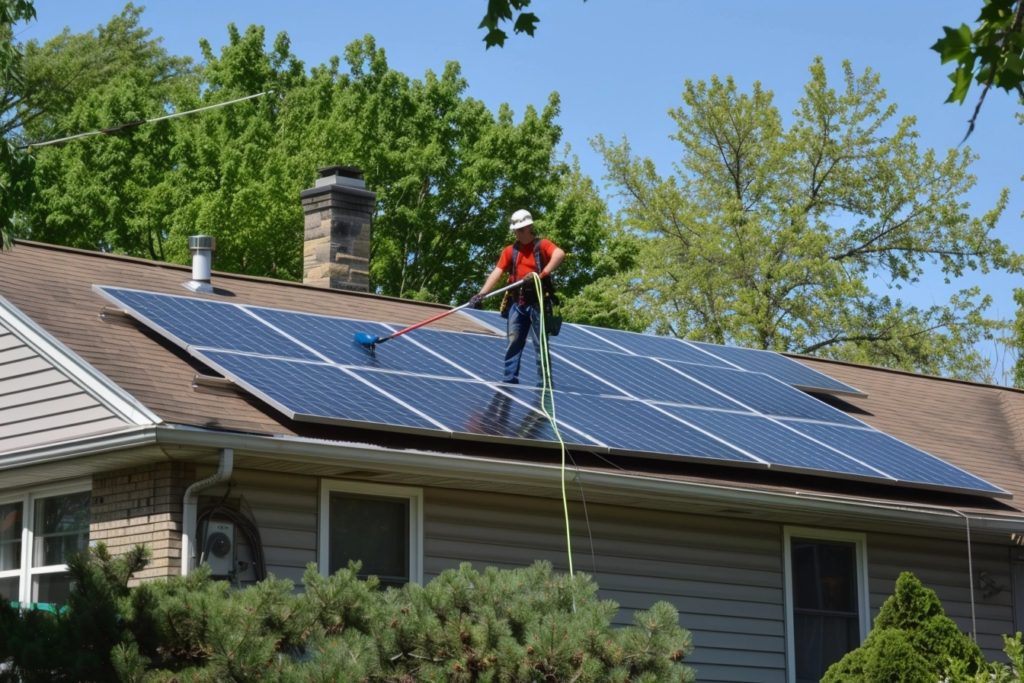
Do you want to install a rooftop solar energy array for your home, but you don’t like the way traditional solar panels look? Solar panels can be rather large, and their bulky appearance on your roof can certainly stand out. Some modern roof design aesthetics can incorporate solar panels that don’t detract from the overall look of your roof — for instance, modern flat roofs and shed roofs can hide solar panels quite well. On the other hand, solar panels can entirely disrupt the appearance of a gable roof.
With this in mind, some solar manufacturers now offer an alternative to standard rooftop solar panels: solar shingles. In essence, solar roof shingles are just a smaller version of typical solar panels, made to integrate seamlessly with the design of your rooftop. Instead of mounting them on a rack on top of your roof, you will instead install solar shingles on the actual roof, much like you would install a typical shingle. Let’s dig into the details of solar roof shingles and determine if they’re a good choice for your residential rooftop solar array.
What Are Solar Shingles? How Do They Work?
Solar shingles are a relatively recent development, as they have only been widely available since the mid-2000s. Instead of mounting your solar panels above your roof, you can instead integrate them with the design of your rooftop, creating a seamless aesthetic that makes the solar roof shingles barely noticeable. In fact, you can think of solar shingles as being both construction materials and energy sources simultaneously!
Solar shingles work almost identically to traditional solar panels: they generate electricity by converting solar energy into usable power for your home. While you can install solar roof shingles anytime you’d like, most homeowners choose to install them while repairing or replacing a roof. For new homes, you’ll often see workers installing solar shingles while building the roof itself.
Not only is it easier to combine these tasks, but it can also significantly reduce costs by killing two birds with one stone. If you find a roofing company that has experience with solar roof shingles, you can often hire them to handle both the construction or repair of the roof itself and the installation of your solar shingles.
The Advantages and Disadvantages of Solar Shingles
There are some pretty clear-cut pros and cons with solar roof shingles that could sway your decision one way or the other.
Advantages
Starting with the advantages, by far the most impactful benefit is their aesthetic quality. While some people don’t mind the way traditional rooftop solar arrays look, others avoid them because of the way they disrupt the appearance of their roofs. This is much less of a factor with solar shingles, which can be integrated with your standard shingles in a way that presents a sleek, seamless appearance.
The other big advantage of solar shingles is how durable they are. Unlike standard solar panels, solar shingles are often manufactured to a higher standard of durability. In fact, solar roof shingles are often able to withstand the force of a hurricane! For instance, Tesla claims that its solar shingles can handle wind speeds exceeding 165 miles per hour, and withstand hail larger than a golf ball.
Finally, in some instances, solar shingles can be quicker to install, as they don’t require as many mounts and brackets as solar panels. In addition, solar roof shingles are much smaller than typical solar panels, making them easier to install in this regard as well.
Disadvantages
First and foremost, solar shingles are more expensive than solar panels, often by a significant margin. If you’re trying to create the most cost-effective rooftop residential solar energy system possible, you will not be using solar roof shingles.
Another issue is that it can be much harder to find a solar installer for shingles. While there are hundreds, if not thousands, of reputable companies installing solar panels across the country, there is a significantly shorter list of solar shingle installers. Because of the increased specialization required, you might find that installation costs for solar shingles exceed those of typical panels as well.
Additionally, if your roof isn’t sloped at the correct angle or in the right direction, you may need the brackets and mounts of traditional solar panels to achieve the correct slope. Continuing along these lines, it’s easier to shift a standard rooftop solar array once it’s installed, while solar shingles are fixed in place on your roof.
Finally, solar roof shingles are simply far less efficient than standard panels. If you’re comparing apples to apples when it comes to pricing, efficiency, and production, you will almost always find that a typical solar panel is a superior option compared to solar shingles.
Solar Shingles vs. Solar Panels: Which Is the Best Choice for You?
Everyone’s situation is different, and no two roofs are the same. That’s why we always advise our readers to get in touch with LGCY Power at 855.353.4899 to learn more about their options. Our expert representatives can help you determine whether solar shingles or solar panels are the right call for your roof. We can also schedule an appointment for one of our local installers to visit your home for an in-person analysis. That said, we’ll close this discussion by outlining a few general statements about when solar roof shingles are the better option, and vice versa.
Solar shingles are typically a good choice if you already need to replace your roof (or you’re building a new home) because you can save money doing two things at once. In addition, solar roof shingles are far and away the better option for aesthetics, as they’re much easier to blend into the design of your roof. Finally, solar shingles may not be an option for you at all if your rooftop is not already sloped at an angle appropriate for solar energy generation.
For more information, contact LGCY Power today!




